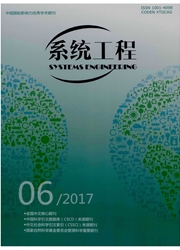

 中文摘要:
中文摘要:
采用三个GARCH族中的两因素波动模型研究金、铜和铝在原油和汇率;中击下的价格波动行为。标准GARCH模型的结果表明铜和铝几乎有着一样的波动持续性且都比金的波动持续性强。CGARCH模型估计结果表明三种金属波动的短期成分收敛到0的速度由快到慢依次为:铝、金、铜。长期波动成分表明铝的长期波动持续性最弱,金的长期波动持续性最强,铜介于二者之间但与金相差很小。EGARCH结果表明只有铜存在杠杆效应而且显著。石油冲击对三种金属都有正影响,汇率的上升对金、铜和铝的波动都有减弱效应。另外,2008年金融危机加剧了金属价格的波动。研究结果可用于风险分析和金融衍生品估值。
 英文摘要:
英文摘要:
This study uses three GARCH family models to study China's metal volatility under the impact of oil and exchange rate shocks. The standard GARCH model estimation suggests that copper and aluminum almost have the same volatility persistence which is higher than that of gold. The results of the CGARCH model indicate that: (1) the short-run volatility components of the three metals converge to zero in the speed from fast to slow as follows: aluminum, gold, copper; (2) the long-run volatility components show that aluminum has the lowest volatility persistence, while glod has the highest long-run volatility persistence, and copperas valatility persitence is between that of the two metals but close to that of gold. The EGARCH estimation suggests that only copper presents leverage effect. Oil shock has positive effects on all the three metals while exchange rate has calming effects on them. In addition, 2008 financial crisis heightened rectal volatility. The results can be used for risk analysis and derivatives valuations.
 同期刊论文项目
同期刊论文项目
 同项目期刊论文
同项目期刊论文
 Research on multifractal features of metal futures market based on multifractal detrended cross-corr
Research on multifractal features of metal futures market based on multifractal detrended cross-corr 期刊信息
期刊信息
